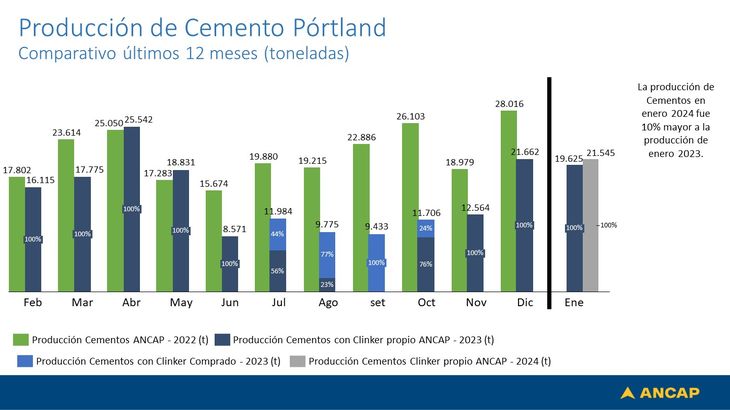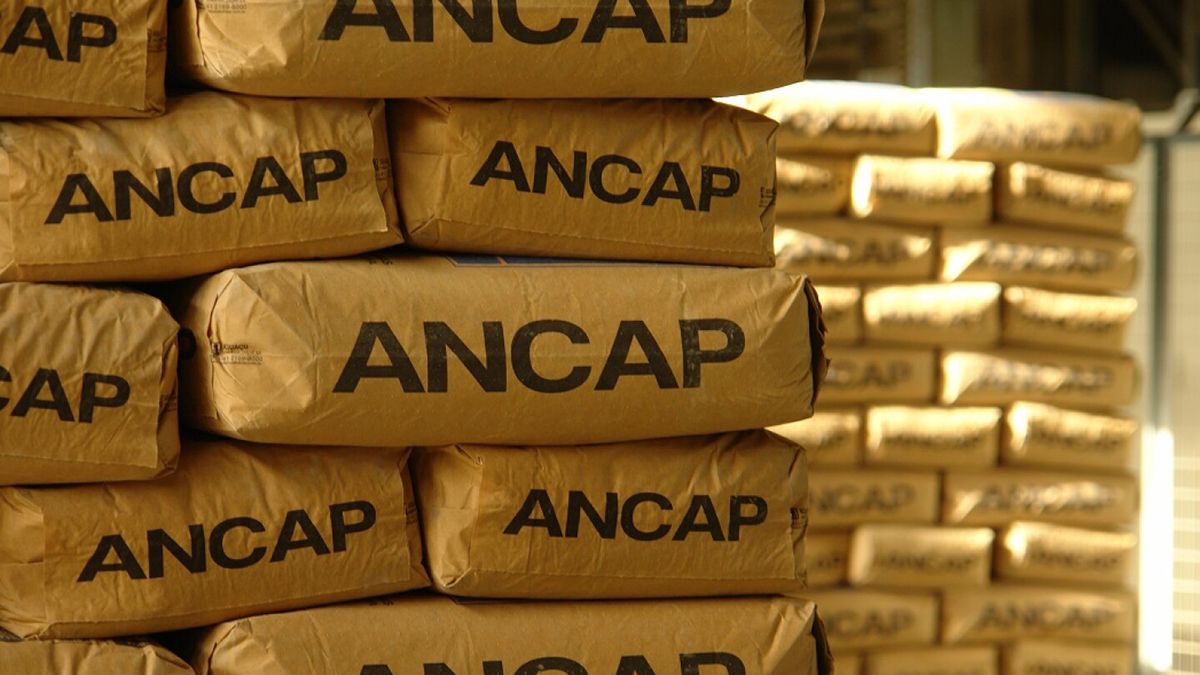The autonomous entity released the figures of tonnage generated by its cement industry corresponding to the first month of the year.
The first month of the year was more productive than January 2023.
Photo: Ancap
The production of portland of Ancap It had a variation close to 10% year-on-year in January, when compared to the same period in 2023, so the autonomous entity’s loss-making cement industry began 2024 producing more tonnage than last year.
The content you want to access is exclusive to subscribers.
In January 2023, the cement industry in Ancap had produced 19,625 tons of portland, while during the first month of the current year there were a total of 21,545 tons, that is, an increase of 1,920 tons and a variation of more than 9.78%. In both periods, 100% clinker—the main component of the product—was used. Ancap.


In the accumulated annual figure for 2023, Portland production had plummeted by 27% compared to 2022, continuing with a sustained decline in tonnage in recent years.
During the 12 months of last year, the Portland business accumulated a production of 183,583 tons, which means a monthly average of more than 15,298 tons. In the last month of 2022, Portland’s production was 28,016 tons (the highest of that year); while in December 2021, it reached 21,746 tons.
ANCAP Portland.jpg

The government ruled out rescuing Ancap’s Portland business
At the beginning of the year, the Undersecretary of the Ministry of Industry, Energy and Mining (MIEM), Walter Verriassured El Telégrafo that the government was not considering rescuing the Portland business from Ancap.
However, the state official stated that, during the current mandate of the President Luis Lacalle Pouyes, measures will continue to be adopted that allow, “at least, to reduce losses.”
On the other hand, he strictly ruled out putting into operation a third furnace as a solution to the problem, since that would require a heavy investment that would not be amortized due to the lack of market, in addition to other complementary investments required for its start-up.
Source: Ambito




